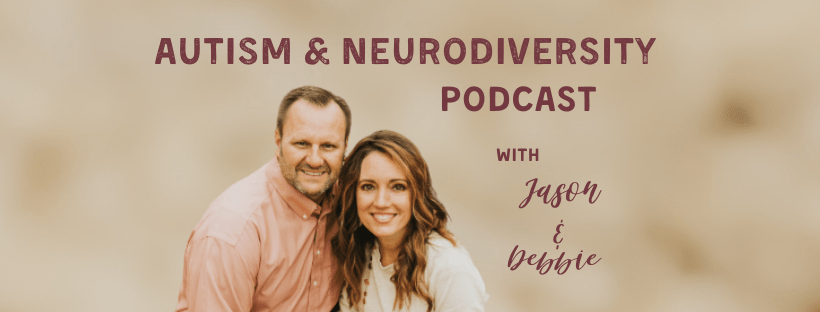[00:03] Jason: Welcome to the Autism and Neurodiversity podcast.
[00:06] Debbie: We’re here to bring you helpful information from leading experts and give you effective tools and support. I’m Jason Grygla, a licensed counselor and founder of Techie for Life, a specialized mentoring program for neurodiverse young adults.
[00:19] Jason: And I’m Debbie Grygla, a certified life coach. And maybe most importantly, we’re also parents to our own atypical Young Adults.
[00:30] Jason: Hello and welcome to this episode of Autism and Neurodiversity. I’m Jason Grygla, and I’ll be speaking to you today.
I’d love to talk about something that I think causes a lot of frustration and problems and that is the wonderful aspect of rigidity in those who are neuro divergent. But anyone who feels like they are kind of in a fight or flight mode or someone who struggles with development and a lot of other issues, there are always issues with rigidity and some of that includes black and white thinking where they feel like things ought to be certain ways, should be certain ways, they must happen.
There’s a lot of fear of unknowns. There’s a lot of fear of failure and pain. The fear kind of plays a lot into rigidity, but also just a desire for comfort, familiarity, and the desire to not have to think really hard. We know that our neurodivergent brains tend to overthink and use up a lot of their emotional units quickly.
And so a lot of times behaviors of the neurogent brain comes from the lower brain where they’re trying to survive life and they’re trying to figure out how do I make it through the day, how do I avoid pain, how do I avoid all of these things? How do I get what I want? How do I get what I need? So rigidity really is based in the lower brain as far as what I will and I won’t do in a defiant survival type mentality.
And I want to make it clear that as parents, if you have firm boundaries, that is not rigidity. Firm boundary is from the upper brain and it actually comes from a place that I thought it out. I have a line. It’s not wise to be flexible or to let somebody cross a certain threshold. So boundaries is different than rigidity.
And in parenting, I think it is wise to decide when is it good to throw out my procedures and just do what they need? I think we’ve mentioned many times sometimes they just need a big hug because they lied after a good talk and sometimes they need a good kick in the butt. Metaphorically speaking, or maybe even humorously, I am going to kick you in the butt. And then you chase them around trying to kick them. If that works for you, great, because I think humor is a really good intervention.
So they value comfortable. That’s because when we’re in our lower brain, we’re in fight or flight mode. And when we want comfortable, we want familiar, which means we want repetition and there’s something that feels really good about doing the same thing over and over that’s familiar.
And so a lot of those who have different brains do things like stimming where they do the same repetition because it releases energy and anxiety and it’s a physical activity that is familiar and it’s a pattern and it’s not new and it’s not unexpected and it’s like an old comfortable blinky stuffed animal that you’ve always had with you.
So rigidity is the lower brain, like I said, and it avoids anything that would allow for the upper brain to do something creative or with perspective or the art side of things as far as anything nuanced. Like as parents, if we’re in our lower brain it’s really hard to see the big picture and we usually are just reacting and sometimes overly rigid because it feels fight or flight. So there’s only one way to do it when you’re black and white. And I think there’s something to that belief that once I’ve learned a lesson, why would I change that lesson? And what was good for me at age four will probably be good for me my whole life. Where once I have a best friend at age ten, they’re my best friend forever, even if I haven’t talked to them or seen them in years and years.
So there’s this little vision laser focus that is very rigid that makes it difficult to go through life because schedules change, foods change, availability change. I think for many parents the food rigidity is one of the hardest things. Wearing the same pair of clothes every day and not being willing to try different clothes and having to do things in certain orders or whatever it is that sets procedural black and white, it lowers their anxiety level and I think that’s probably the most important thing to understand so that you can be out of your lower brain and function out of your upper brain.
Your first questions is to first off, figure out what are they trying to get out of being rigid. And I think I just described it really well, they’re just exhausted or they already know better. Why would you even change it? You’re the one causing the problem because you’re trying to mix things up.
This is the way it should be, you’re the troublemaker and expecting things to be a little bit different. So the immediate first impulse is usually what their first choice is what would you like? Well, I want that.
And once they’ve decided they don’t rethink it usually or the rigidity makes it so they can never be comfortable and never make a choice and that can be rigid as well. I can’t ever settle on something because if it’s not going to be perfect, I can’t choose any of them either way. It’s kind of rigid in their own way.
So saying they will or won’t do something, it’s also a lot about self control. They want control. There are so many things out of their control when they put their foot down and get stubborn and rigid.
We often call it oppositional defiant disorder. It’s different in the autism community or maybe others as well with developmental disorders. And we call it pathological demand avoidance sometimes, but they kind of cross over. I do think there’s oppositional find disorder and it’s different than pathological demand avoidance, but they can look very similar.
And parents are just thinking, why are you so stubborn? Why can’t you just do it? Why can’t you just help me? So the first impulse that they make and say yes, or the first impulse which is I can’t choose, they stick with that and they can never choose.
Or at the beginning of the school year, I’m going to fail. And they’re so rigid and they’re thinking that they know that they’re going to fail and it doesn’t change, at least not very easily. And so we’ll talk about that in a few minutes.
How to work with this rigidity? I think sometimes I wonder, is it more painful for them to be rigid or for those around them to deal with their rigidity? I’m not sure. I know it’s exhausting to have a developmental disorder or even just a neurodivergent brain in this world of nuance. And we know that the frontal lobe, for example, in autism, has less blood flow, therefore less brain activity in that frontal cortex.
And so it’s asking them to lift 1000 lbs., which isn’t really possible for us. We might only be asking them to lift 100lbs., but for them it might as well be 1000lbs. because we think we can lift 1lbs.000. They should be able to lift 100 lbs.in switching back and forth and being resilient and flexible in how things work. So we’re asking them things that are directly related to their disability, which means their physiological brain is not created to work well with flexibility.
Now, being too flexible is a problem. We all know people who are wishy washy, they don’t have boundaries. Maybe they are enmeshed with others and they allow any whim or wind or dust come along and just blow them off course. That’s not real healthy either.
So the rigidity can be a plus and a minus, I’m sure. I just don’t like that it’s rigidity instead of a healthy perspective where they made a decision to move forward in a specific way and they’re not going to let go of that because they know they’re going to stick with it until the process is finished, because it was the right choice. I don’t know. I just have empathy and compassion for people who are rigid because I know how exhausting it is, how exhausting it is to think in terms of very black and white, one sided one way and then have to hold on to it.
How do you help? Well, the first thing is to recognize whether I am in my lower brain or my upper brain in this interaction. And if I’m trying to make force, fresher, manipulate, and push someone into something because it’s important and I’m right, even if I am right and I know I’m right, I’ve immediately moved from equal partnering, mentoring to that parent child role that coercion, and I’m not going to get anywhere. I might get compliance temporarily, but in the end, I’m really not helping them develop.
Once in a very rare while, when I know someone who’s really close to that cusp of flipping to trying something new and I know they’ll love it and I’m willing to take that bet, then I’ll say, you know what? If you don’t get on that jet Ski, or if you don’t take one bite, kick your butt like we talked about or something. Kind of joking, kind of serious, but I’ll pull all the stops.
And there’s some example, I think I had one metaphor for you, and it was that when you have a train going full speed ahead and it’s literally hundreds of thousands of pounds and you have to stop it and get it going back the other direction, it takes a lot of time and space moving forward before that momentum will change.
And also when you’re trying to turn an oil tanker out on the ocean, it takes four or 5 miles of open ocean to move that oil tanker by degrees, around 180 degrees. And it’s tedious and slow and painful, and you’re working one degree at a time that’s slow and it’s painful. And trying to overcome rigidity is pretty much like that. It doesn’t even feel like you’re slowing down, maybe because it’s not fast enough. It doesn’t feel like you’re turning in the right direction, and you actually might not be. It might take ten times before you get one degree of turn, and then ten more times, and you might feel like you’re wasting your time.
Focusing on the change of behavior in the moments is necessary. I know the best thing you can do is build a relationship. Stay in your upper brain, use humor, logic, appeal to the things they already care about, and plan ahead.
Lots of front loading can be helpful and understand with empathy that they need control, familiarity. They’re trying to avoid a bunch of fears, and life is already hard enough. So be patient with them and be kind to yourself.
Rigidity is hard, but it’s not the worst thing in the world. Most of those who are rigid have really good hearts and want to do good things, and I think that’s what we want. It’s a really good person. We’d also like a functional person. So keep working on it and don’t give up. Thanks for joining me. Hope this was helpful, and we’ll talk to you again soon. Bye bye.
[13:07] Debbie: Thanks for joining us on this episode of Autism and Neurodiversity with Jason and Debbie. If you want to learn more about our work, come visit us at jasondebbie.com.




